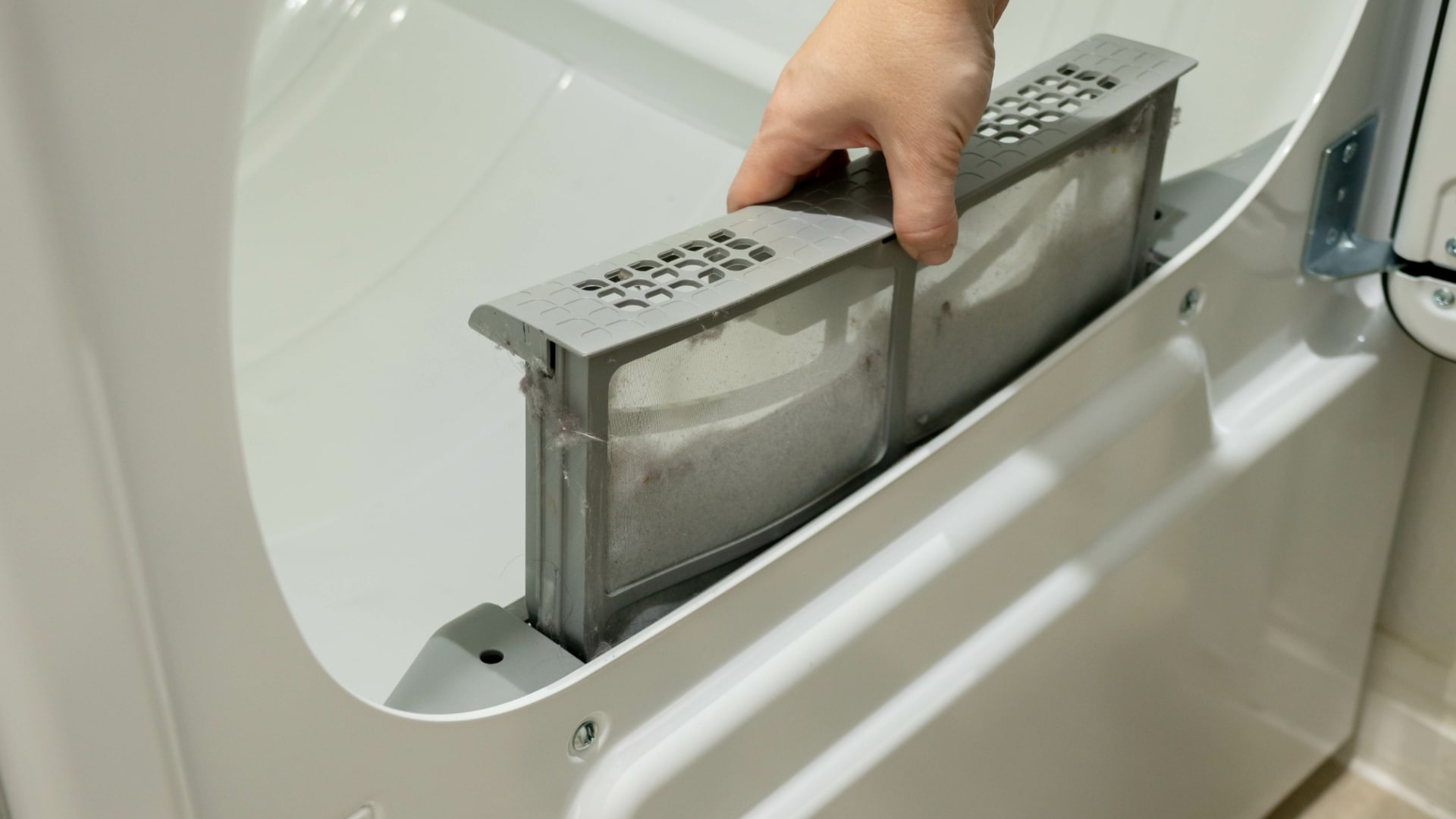A GE dishwasher not heating or drying often indicates a faulty heating element or thermostat issue. Regular maintenance checks can prevent such problems.
Dealing with a GE dishwasher that refuses to heat up or dry your dishes can be frustrating. It’s a common issue that many homeowners face, signaling a possible malfunction within the appliance’s heating mechanisms. This problem can stem from various sources, such as a broken heating element, a malfunctioning thermostat, or even a tripped circuit breaker.
Ensuring your dishwasher operates efficiently involves routine checks and maintenance. Identifying the root cause early helps avoid prolonged inconveniences and potential damage to the unit. This guide aims to provide homeowners with essential insights into troubleshooting and resolving issues related to GE dishwashers not heating or drying dishes properly. By staying informed and proactive, you can ensure your dishwasher remains a reliable helper in your kitchen for years to come.
Introduction To Ge Dishwasher Heating Issues
Experiencing a GE dishwasher that won’t heat or dry dishes is frustrating. This issue can stem from various causes. Understanding the symptoms and the importance of fixing them is crucial. Let’s dive into the common signs and reasons why prompt attention is essential.
Common Symptoms
Damp dishes after a cycle signal heating problems. You may also notice cool interior walls of the dishwasher. A lack of steam when opening the door right after a cycle is another red flag. These are signs that the heating element may be malfunctioning.
Why It Matters
A dishwasher that doesn’t heat affects more than just drying. It’s about sanitation and efficiency. Heat is necessary to kill germs and ensure a thorough clean. It also prevents water spots and residue on your dishes. Thus, resolving heating issues is key to the machine’s performance.

Credit: fredsappliance.com
Initial Checklist Before Troubleshooting
Before diving into troubleshooting your GE dishwasher, it’s crucial to perform an initial checklist. This ensures the basics are in order and can often save time. Here are simple steps to follow:
Power Supply Check
- Verify the dishwasher is plugged in.
- Check the circuit breaker or fuse box.
- Ensure no tripped circuits are present.
Settings And Controls Review
After confirming the power supply, review the settings:
- Inspect the control panel for correct selections.
- Choose the right cycle for drying.
- Check for engaged child lock features.
Key Components Affecting Heat And Dry Functions
Understanding the key components in your GE dishwasher is crucial. These parts ensure dishes come out hot and dry. Let’s explore the elements that affect these functions.
Heating Element Essentials
The heating element in your dishwasher serves a vital role. It heats the water during the wash cycle. It also dries the dishes post-washing. Look for signs of damage or malfunction. A broken element means cold, wet dishes.
Signs of a faulty heating element include:- Visible cracks or blistering
- Dishes remain cold after a cycle
- Water not reaching the proper temperature
High-limit Thermostat Overview
The high-limit thermostat prevents overheating. It’s a safety device that cuts power if temperatures soar. A malfunctioning thermostat stops the heating element. This leaves dishes damp.
Check the thermostat for:- Continuity using a multimeter
- Signs of burning or melting
- Correct placement and secure connections
Vent And Fan Assembly
The vent and fan assembly is key for drying. It expels humid air and draws in dry air. A clogged vent or a broken fan impairs drying. This results in moisture-laden dishes.
Inspect these areas:- Vent openings for blockages
- Fan blades for damage or obstructions
- Motor function for proper operation
Diy Fixes For The Heating Element
DIY Fixes for the Heating Element are key when your GE dishwasher isn’t heating or drying dishes properly. Before calling a professional, try these simple checks and fixes. They could save you time and money.
Visual Inspection
First, ensure your dishwasher is unplugged. Safety comes first. Next, locate the heating element. It’s usually at the dishwasher’s bottom. Look for signs of damage like burn marks or breakage. If you spot damage, the element likely needs replacement.
Continuity Test
Use a multimeter for this test. Set it to the ohm setting. Remove the heating element’s terminals. Place each multimeter lead on one terminal. A reading means the element has continuity. No reading indicates a faulty element.
Replacement Guide
Order a new heating element for your model. Turn off the power and water supply. Remove the bottom rack. Unscrew the element. Pull out from the dishwasher. Place the new element in. Secure with screws. Reconnect terminals. Test the dishwasher.
These DIY fixes can get your dishwasher back in top shape. Remember to always prioritize safety. Consult the manual for specifics on your GE model. With patience and care, your dishes will be warm and dry again!
Resetting The High-limit Thermostat
A dishwasher that won’t heat or dry can be frustrating. A common culprit is the high-limit thermostat. This safety device prevents overheating. When it trips, it may stop the heating element from working. Resetting this can often solve the issue. Let’s look at the signs of a tripped thermostat and the steps to reset it.
Signs Of A Tripped Thermostat
- Dishes remain wet after cycle ends
- No steam when opening the dishwasher immediately after a cycle
- Cool interior despite completing a heat cycle
- Error codes displayed on the dishwasher panel
Step-by-step Reset Process
- Turn off the dishwasher and unplug it.
- Remove the bottom kick plate.
- Locate the high-limit thermostat.
- Press the button on the thermostat to reset it.
- Reassemble the kick plate.
- Plug in and turn on the dishwasher.
- Run a test cycle to check for heat and drying.
Tip: Always ensure your safety. Work with tools and electricity with care. If unsure, seek professional help.

Credit: m.youtube.com
Cleaning And Maintenance For Optimal Performance
Maintaining your GE dishwasher is key to its performance. A well-kept appliance heats and dries dishes effectively. Regular upkeep ensures your dishwasher runs smoothly. Let’s dive into the essential cleaning and maintenance tips.
Vent And Fan Cleaning
Over time, the vent and fan in your dishwasher may accumulate debris. This can prevent your dishwasher from drying dishes properly. To clean these components:
- Turn off and unplug your dishwasher.
- Remove the vent cover by following the user manual.
- Use a soft brush to gently clean the fan and vent area.
- Wipe down with a damp cloth.
- Replace the vent cover and plug your dishwasher back in.
Filter Maintenance
A clogged filter can restrict water flow, impacting heating and drying. To maintain the filter:
- Locate the filter at the bottom of the dishwasher.
- Twist to remove it.
- Rinse the filter under running water.
- Use a soft brush to remove stubborn particles.
- Reinsert the filter securely.
Regular Dishwasher Cleaning Tips
Cleaning your dishwasher regularly prevents build-up and odors. For a sparkling clean interior:
- Fill a dishwasher-safe cup with white vinegar.
- Place on the top rack.
- Run a hot water cycle with no dishes.
- After the cycle, sprinkle baking soda on the bottom.
- Run a short, hot water cycle again.
Bold maintenance steps ensure better dishwasher performance. Use these tips to keep your GE dishwasher in top shape.
When To Call A Professional
Is your GE dishwasher failing to heat or dry your dishes? It might be time to call in the experts. While some fixes are simple, others require professional tools and knowledge. Let’s explore when it’s best to seek professional help.
Troubleshooting Limits
Before reaching out to a technician, try basic troubleshooting:
- Check the power source: Ensure the dishwasher is plugged in.
- Inspect the door latch: A faulty latch may prevent heating.
- Review the settings: Choose the right cycle for drying.
If these steps don’t fix the issue, a deeper problem may exist. Complex issues with the heating element, internal wiring, or control board are tough to solve. If you face these, it’s time to call a professional.
Finding A Qualified Technician
Choosing the right technician is crucial. Look for these qualities:
- Experience: Find someone with GE dishwasher expertise.
- Certification: Ensure they have the right credentials.
- Warranty: A good technician offers service guarantees.
Check online reviews and ratings to learn about their service quality. Once you find a reliable technician, they can diagnose and fix your dishwasher efficiently. Trusting a professional will save you time and prevent further damage to your appliance.
Preventive Measures And Long-term Care
For your GE dishwasher to perform at its best, preventive measures are key. Proper care ensures it heats and dries dishes effectively. Let’s explore how to keep your dishwasher in top shape.
Routine Maintenance Schedule
Regular check-ups prevent future problems. Follow these steps:
- Inspect the heating element monthly.
- Clean the filter after each use.
- Check for clogs in the spray arms regularly.
- Descale the dishwasher every six months.
Usage Tips For Longevity
Use your dishwasher wisely to extend its lifespan:
- Load dishes correctly to avoid blockages.
- Run it at full capacity to save energy and water.
- Avoid opening the door mid-cycle.
- Choose the right cycle for your load.
Investing In Quality Detergent
A good detergent makes a difference:
| Detergent Type | Benefits |
|---|---|
| High-quality powder | Effective cleaning, reduces residue |
| Enzyme-rich tablets | Break down tough food particles |
| Rinse aids | Prevent water spots, enhance drying |
Choose detergents that suit your dishwasher’s design. They should leave dishes spotless and dry.
Credit: www.olganossova.com
Frequently Asked Questions
Why Is My Dishwasher Not Getting Hot Or Drying?
Your dishwasher might not heat up or dry due to a faulty heating element, a malfunctioning thermostat, or a broken high-limit thermostat. Check these components for issues.
Why Is My Ge Dishwasher Not Heat Drying?
Your GE dishwasher may not heat dry due to a tripped thermal fuse, faulty heating element, or improper loading. Ensure the vent is unblocked and the dishwasher is set to the correct cycle with the heat dry option selected.
How To Tell If The Heating Element Is Bad In A Dishwasher?
To determine if a dishwasher’s heating element is bad, check for visible damage or discoloration. Use a multimeter to test for continuity. Lack of heat during drying cycles also indicates a faulty element.
What Is A Common Problem With Ge Dishwashers?
A common problem with GE dishwashers is their tendency to not drain properly. This issue often stems from clogged filters or drain lines. Regular maintenance can help prevent this problem.
Why Is My Ge Dishwasher Not Heating?
GE dishwashers may not heat due to a faulty heating element, a malfunctioning high-limit thermostat, or an issue with the control board. It’s essential to diagnose the specific cause to fix the problem.
Conclusion
Wrapping up, a GE dishwasher that fails to heat or dry can be a hassle. We’ve explored common causes and solutions to help you tackle the issue. Remember, regular maintenance can prevent many problems before they start. For persistent troubles, don’t hesitate to call a professional.
Ensure your appliance runs smoothly for clean, dry dishes every time.





